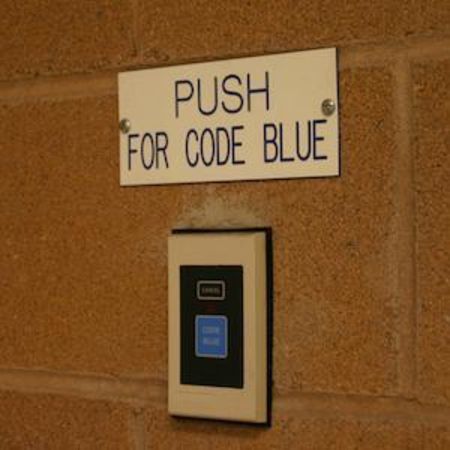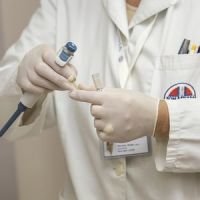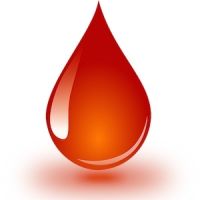When anaesthesiologist Sharon Einav took her car to be repaired on the way to hospital one day, she wondered why the mechanic was just leaning on his car. It took a while to realise he was having a heart attack, she related at Euroanaesthesia 2016 in London in May. This lack of situational awareness was an example she used to show how the chain of survival is really comprised of steps that comprise a whole series of issues where improvements could be made or where mistakes might occur.
Prof. Einav, Chair of the Intensive Care Medicine subcommittee of the European Society of Anaesthesiology, Professor of Anaesthesia and Intensive Care, Hebrew University Faculty of Medicine and Director of Surgical Intensive Care and Chair of the Resuscitation Committee at Shaare Zedek Medical Center, Jerusalem, Israel explored the issues of “death by resuscitation” with pertinent points about the “real” chain of survival, those steps in the resuscitation cycle that comprise a whole series of issues where improvements could be made or where mistakes might be made.
1. Recognise the presence of a signal
Our natural inclination is that if you need to recognise the presence of a signal, you need to monitor, said Einav. There may be too little understanding of or too much information from monitors, warned Einav, leading to failure to recognise the importance of a signal, lack of situational awareness (as in her example) and cognitive dissonance. When there is too much information, the human brain is unable to process it. Of all the vital signs monitored, the two important variables are the change in respiratory rate and change in heart rate.
2. Realise you should respond
This requires several steps - looking at the data, processing it and getting situational awareness. However, the human working memory cannot integrate more than 3-4 variables at a time. Monitors can stream data from up to 8 variables. There is also the issue of alarm fatigue, the many false positives from monitors.
3. Be willing to respond & 4. Be able to respond
Even when trained in CPR, bystanders may not be willing to apply it, as studies have shown, said Einav. There is no data on the willingness of doctors and nurses to perform hands on CPR, added Einav. We just assume.
5. Know how to respond
There are very clear strategies for improving survival after in-hospital cardiac arrest, said Einav. The standard of care is to train our staff, install standard defibrillation equipment, and maintain and use resuscitation equipment.
6. Learn from your mistakes
To learn from our mistakes, we need to provide feedback on performance, emphasised Einav. We don’t know what’s we are doing unless we measure it, she added. She cited the example of pauses in chest compression, which can be measured and analysed. At her hospital, Shaare Zedek Medical Center in Jerusalem, Israel, they have a defibrillator dashboard, which the resuscitation officer checks twice a day. This can show, for example, if the defibrillator is not switched on.
See Also: Anaesthesiology and Critical Care Medicine: Interview with Professor Sharon Einav
They analyse recordings of resuscitations on the defibrillators and also compare these with the report of the code event. They have found cases where there were inappropriate energy levels, or the shock was not delivered and there can be discrepancies between the defibrillator reading and the report.
They found some cases where defibrillation was not happening fast enough. This was found to be due to equipment issues - when it needs to be turned to red, red is a deterrent colour. Einav showed that they have labelled their machines with instructions to turn it to red in a resuscitation. It worked. They go back to the sources of the mistakes to find them.
Concluded Einav: “The trend towards improvement of survival in hospital will not happen if we are not looking at what we are doing. We are not improving because we are not measuring.”
Claire Pillar
Managing editor, ICU Management & Practice
Image credit: freeimages.com
Prof. Einav, Chair of the Intensive Care Medicine subcommittee of the European Society of Anaesthesiology, Professor of Anaesthesia and Intensive Care, Hebrew University Faculty of Medicine and Director of Surgical Intensive Care and Chair of the Resuscitation Committee at Shaare Zedek Medical Center, Jerusalem, Israel explored the issues of “death by resuscitation” with pertinent points about the “real” chain of survival, those steps in the resuscitation cycle that comprise a whole series of issues where improvements could be made or where mistakes might be made.
1. Recognise the presence of a signal
Our natural inclination is that if you need to recognise the presence of a signal, you need to monitor, said Einav. There may be too little understanding of or too much information from monitors, warned Einav, leading to failure to recognise the importance of a signal, lack of situational awareness (as in her example) and cognitive dissonance. When there is too much information, the human brain is unable to process it. Of all the vital signs monitored, the two important variables are the change in respiratory rate and change in heart rate.
2. Realise you should respond
This requires several steps - looking at the data, processing it and getting situational awareness. However, the human working memory cannot integrate more than 3-4 variables at a time. Monitors can stream data from up to 8 variables. There is also the issue of alarm fatigue, the many false positives from monitors.
3. Be willing to respond & 4. Be able to respond
Even when trained in CPR, bystanders may not be willing to apply it, as studies have shown, said Einav. There is no data on the willingness of doctors and nurses to perform hands on CPR, added Einav. We just assume.
5. Know how to respond
There are very clear strategies for improving survival after in-hospital cardiac arrest, said Einav. The standard of care is to train our staff, install standard defibrillation equipment, and maintain and use resuscitation equipment.
6. Learn from your mistakes
To learn from our mistakes, we need to provide feedback on performance, emphasised Einav. We don’t know what’s we are doing unless we measure it, she added. She cited the example of pauses in chest compression, which can be measured and analysed. At her hospital, Shaare Zedek Medical Center in Jerusalem, Israel, they have a defibrillator dashboard, which the resuscitation officer checks twice a day. This can show, for example, if the defibrillator is not switched on.
See Also: Anaesthesiology and Critical Care Medicine: Interview with Professor Sharon Einav
They analyse recordings of resuscitations on the defibrillators and also compare these with the report of the code event. They have found cases where there were inappropriate energy levels, or the shock was not delivered and there can be discrepancies between the defibrillator reading and the report.
They found some cases where defibrillation was not happening fast enough. This was found to be due to equipment issues - when it needs to be turned to red, red is a deterrent colour. Einav showed that they have labelled their machines with instructions to turn it to red in a resuscitation. It worked. They go back to the sources of the mistakes to find them.
Concluded Einav: “The trend towards improvement of survival in hospital will not happen if we are not looking at what we are doing. We are not improving because we are not measuring.”
Claire Pillar
Managing editor, ICU Management & Practice
Image credit: freeimages.com
Latest Articles
Resuscitation, ESA 2016
When anaesthesiologist Sharon Einav took her car to be repaired on the way to hospital one day, she wondered why the mechanic was just leaning on his car. It took a while to realise he was having a heart attack, she related at Euroanaesthesia 2016 in Lond



























